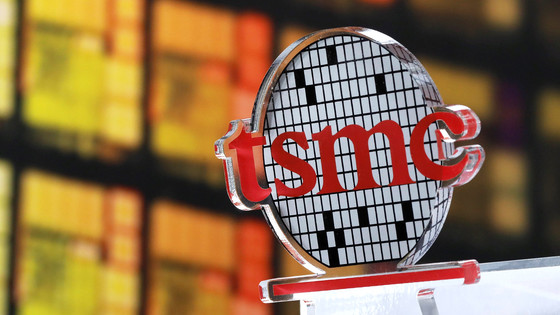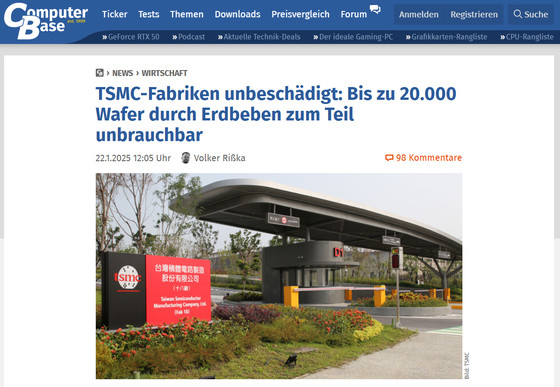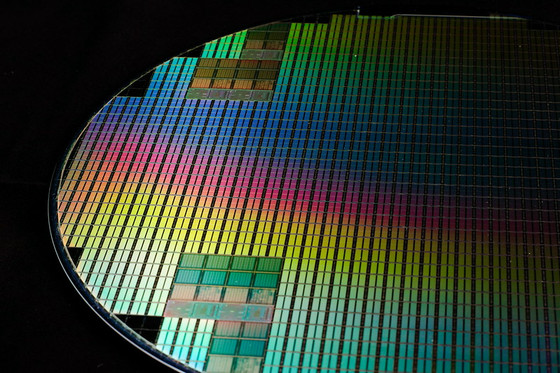Earthquake of magnitude 6.4 may lead to the disposal of nearly 20,000 TSMC wafers

By
On January 22, 2025, a magnitude 6.4 earthquake occurred in Dapu Township, Chiayi County, Taiwan. The epicenter was 9.4 km deep, and the earthquake recorded a seismic intensity of 5 in the Southern Science Park, where many technology facilities are located, a seismic intensity of 4 in the Central Science Park , and a seismic intensity of 3 in Hsinchu , known as Taiwan's 'Silicon Valley.' It has been reported that this has affected semiconductor manufacturing at TSMC, the world's largest semiconductor foundry.
TSMC-Fabriken unbeschädigt: Bis zu 20.000 Wafer durch Erdbeben zum Teil unbrauchbar - ComputerBase
https://www.computerbase.de/news/wirtschaft/tsmc-fabriken-unbeschaedigt-bis-zu-20-000-wafer-durch-erdbeben-zum-teil-unbrauchbar.91119/

Earthquake may have affected 20,000 TSMC wafers — the majority will likely have to be scrapped | Tom's Hardware
https://www.tomshardware.com/tech-industry/earthquake-may-have-affected-20-000-tsmc-wafers-the-majority-will-likely-have-to-be-scrapped
Following the earthquake, TSMC evacuated employees from its central and southern manufacturing sites and temporarily suspended production. Fab 14 and Fab 18 in the Southern Science Park were particularly affected. Fab 14 manufactures N4/N5 processes, while Fab 18 manufactures N3 processes. Fab 8, a 200mm wafer factory, and an advanced packaging facility are also located in the area.
According to reports, the factory building itself is designed to withstand a magnitude 7 earthquake, and the earthquake did not cause any major damage to the building or infrastructure such as electricity and water. However, semiconductor manufacturing equipment is very precise and can be affected by even the slightest vibration. In particular, it has been pointed out that wafers in the process of drawing circuit patterns using lasers are more likely to become defective due to the effects of vibration.

by Enrique Jiménez
According to TSMC, up to 20,000 wafers in production may have been affected. Given that TSMC's wafer production volume is about 3.42 million wafers per quarter and about 38,000 wafers per day, the damage is relatively small, and the direct impact on financial results is expected to be limited. However, there is a possibility that product production of certain customers may be affected, which may affect market supply, especially for high-performance products with low production volumes.
More than 70 aftershocks have occurred in the area since the main earthquake, 19 of which recorded a seismic intensity of 4 or higher. These aftershocks may also affect the precision adjustment of manufacturing equipment. TSMC suffered losses of approximately $92 million (approximately 14.4 billion yen) in the Hualien earthquake that occurred in April 2024, and it took three days for facilities to be fully restored.
While some of the damage is expected to be compensated by insurance, it is expected that it will take some time to readjust the manufacturing equipment and restart the production line. In particular, more precise manufacturing processes such as the latest N3 process require careful adjustment. TSMC aims to resume production as soon as possible, but is reportedly taking a cautious approach from the perspective of quality control.
Related Posts:
in Hardware, Posted by log1i_yk





